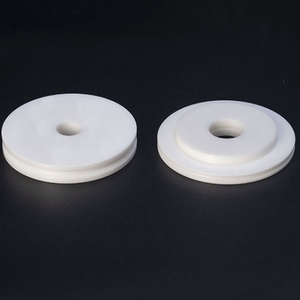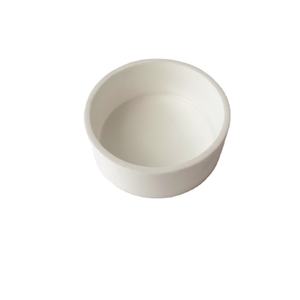Discover Premium Ceramic Products | Durability & Elegance United | Advanced Ceramics
PRODUCT PARAMETERS
Description
Introduction to Alumina Ceramics
Alumina ceramics are known for their high hardness, wear resistance, corrosion resistance, good electrical insulation and high temperature stability. According to the different alumina content, it can be divided into different grades, such as 95 porcelain, 99 porcelain, etc., among which 99 porcelain refers to ceramic materials with an alumina content of 99%. As the alumina content increases, its mechanical strength and electrical insulation properties will also increase accordingly.
Characteristics of Alumina Ceramics
High Hardness: Alumina ceramics have extremely high hardness, which makes it very wear-resistant and suitable for manufacturing abrasive tools and parts that require wear resistance.
Wear resistance: Due to its high hardness, alumina ceramics show excellent wear resistance and are suitable for manufacturing parts for long-term use.
Corrosion resistance: Alumina ceramics have good resistance to most acids and alkalis, making them widely used in the chemical industry.
Good electrical insulation: As an excellent electrical insulating material, alumina ceramics are widely used in electronic and electrical products.
High temperature stability: Ability to withstand extremely high temperatures without significant physical or chemical changes, which makes it an ideal choice for applications in high temperature environments.
Biocompatibility: In the medical field, certain grades of alumina ceramics are used to make medical devices such as artificial joints due to their good biocompatibility.
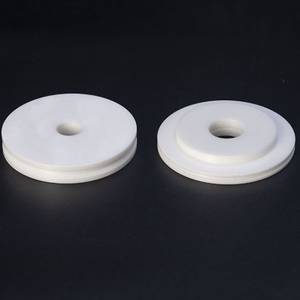
(Laser Cutting Al2O3 Alumina Ceramic Substrate)
Specifications of Laser Cutting Al2O3 Alumina Ceramic Substrate
The Laser Cutting Al2O3 Alumina Porcelain Substrate offers high precision for commercial applications. The product is light weight aluminum oxide (Al2O3) with pureness degrees from 96% to 99.5%. This makes sure outstanding mechanical strength and thermal stability. The substrate density varies from 0.5 mm to 10mm. The laser-cutting procedure preserves precision throughout all densities. A carbon dioxide laser is normally utilized. It supplies tidy edges with very little micro-cracks. The laser power ranges 100W and 500W. Setups readjust based on substrate thickness and desired coating. Pulse regularity and reducing rate are optimized. This decreases heat-affected zones. Resistances are limited. Requirement dimensional precision is ± 0.05 mm to ± 0.1 mm. Repeatability makes certain uniformity in automation. Surface area roughness after cutting procedures Ra ≤ 0.8 µm. This meets needs for applications needing smooth surfaces. The substratum stands up to temperature levels approximately 1600 ° C. It performs well in high-heat atmospheres. Chemical resistance is strong versus acids and antacids. Electrical insulation residential properties stay secure under extreme conditions. Applications consist of electronics, aerospace, and medical devices. Common usages are circuit service providers, sensor components, and insulating parts. Custom shapes and sizes are available. Openings, ports, and intricate patterns are attainable. Edge chamfering is optional. Handling happens in regulated settings. This protects against contamination. Substrates go through high quality checks for flaws. Each set is evaluated for density and porosity. Product packaging makes use of vacuum-sealed or shock-absorbent materials. This protects against damage during delivery. Conformity with ISO 9001 and RoHS criteria is basic. Qualifications guarantee integrity for commercial use.
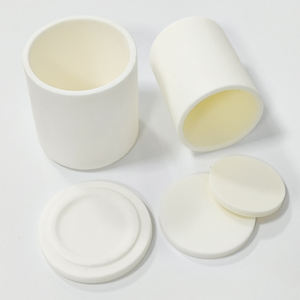
(Laser Cutting Al2O3 Alumina Ceramic Substrate)
Applications of Laser Cutting Al2O3 Alumina Ceramic Substrate
Laser cutting Al ₂ O ₃ alumina ceramic substratums provides accurate solutions for markets needing high-performance products. Alumina porcelains are hard, heat-resistant, and electrically shielding. These homes make them excellent for demanding applications. Laser cutting provides precision unrivaled by typical techniques. It creates tidy sides without damaging the product. This is essential for parts needing tight tolerances.
In electronics, alumina substratums are utilized for circuit card and microelectronic product packaging. Laser cutting drills micro-vias and shapes intricate patterns. This makes certain reliable electric connections. The process prevents thermal anxiety, maintaining the substratum’s stability. Automotive systems use alumina components in sensing units and ignition modules. Lasers cut these parts to fit portable styles. The outcome is resilient components that endure high temperatures and vibration.
Medical gadgets benefit from alumina’s biocompatibility. Laser-cut ceramic parts are utilized in implants and medical tools. The accuracy makes certain clean and sterile, burr-free edges. This lowers contamination risks. Aerospace applications depend on alumina for insulation and thermal management. Laser cutting types complicated geometries for engine elements and heat shields. The method maintains worldly stamina under severe problems.
Commercial devices makes use of alumina substrates for wear-resistant parts. Lasers tailor forms for shutoffs, nozzles, and seals. This extends part life expectancy in rough atmospheres. Modification is fast and cost-effective. Prototypes and little batches are produced without pricey tooling.
Laser-cut alumina sustains renewable resource innovations. Solar panels and fuel cells make use of ceramic parts for insulation and structural assistance. Precision reducing ensures effective energy transfer. Research labs use laser-cut alumina in speculative setups. The product’s security allows accurate testing in high-temperature or corrosive setups.
The procedure adapts to differing thicknesses and dimensions. Slim sheets or large blocks are reduced with equal precision. Automation integrates laser systems right into production lines. This improves outcome while maintaining top quality. Laser cutting minimizes material waste. It optimizes raw material use, reducing expenses.
Alumina’s chemical inertness makes it suitable for severe environments. Laser-cut parts stand up to acids, antacid, and solvents. This is crucial for chemical processing equipment. The combination of product homes and advanced reducing innovation fulfills varied industrial requirements.
Company Introduction
Advanced Ceramics founded on October 17, 2014, is a high-tech enterprise committed to the research and development, production, processing, sales and technical services of ceramic relative materials and products.. Since its establishment in 2014, the company has been committed to providing customers with the best products and services, and has become a leader in the industry through continuous technological innovation and strict quality management.
Our products includes but not limited to Silicon carbide ceramic products, Boron Carbide Ceramic Products, Boron Nitride Ceramic Products, Silicon Carbide Ceramic Products, Silicon Nitride Ceramic Products, Zirconium Dioxide Ceramic Products, Quartz Products, etc. Please feel free to contact us.(nanotrun@yahoo.com)

Payment Methods
T/T, Western Union, Paypal, Credit Card etc.
Shipment Methods
By air, by sea, by express, as customers request.

5 FAQs of Laser Cutting Al2O3 Alumina Ceramic Substrate
What is Al2O3 alumina ceramic substrate?
Al2O3 alumina ceramic is a material made from aluminum oxide. It is hard, resists high heat, and insulates electricity. It is used in electronics, machinery, and medical devices. It handles extreme temperatures and harsh chemicals well.
Why use laser cutting for Al2O3 substrates?
Laser cutting is precise and causes little damage. It works for complex shapes and thin materials. The laser beam melts or vaporizes the ceramic cleanly. Heat stays controlled near the cut area. This reduces cracks or warping.
What defects occur during laser cutting?
Cracks or rough edges may form. This happens if the laser power is too high or speed too fast. Thermal stress from uneven cooling can also cause breaks. Proper settings and cooling systems lower these risks.
What thickness can laser cutting handle?
Most lasers cut Al2O3 up to 2 mm thick. Fiber lasers manage up to 5 mm. Thicker pieces need multiple passes. Thicker cuts take longer and may need extra polishing.
Is post-processing needed after laser cutting?
Yes. Remove debris with air or water cleaning. Grind or sand edges for smoothness. Annealing may reduce residual stress. Check dimensions and quality before use.
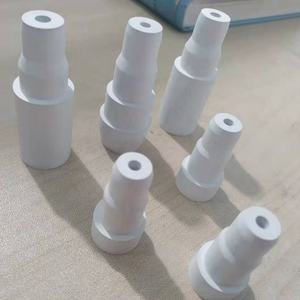
(Laser Cutting Al2O3 Alumina Ceramic Substrate)
REQUEST A QUOTE
RELATED PRODUCTS
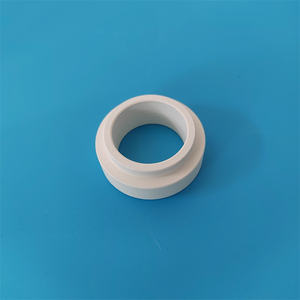
Excellent Performance Alumina Ceramic Factory Customized Size Refractory
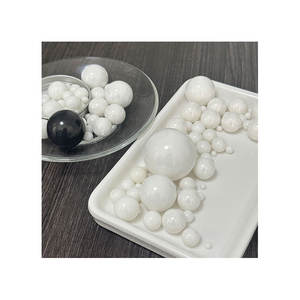
Custom High Purity Pink Aluminum Oxide Al2O3 Substrate Alumina Ceramic Wafer
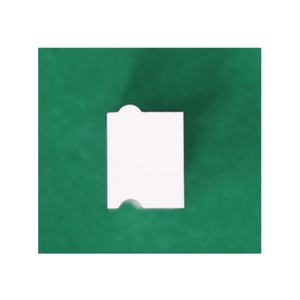
High Purity Al2O3 Alumina Ceramic Plate
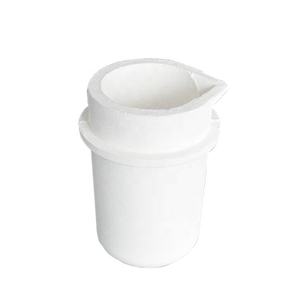
High Brazing Strength Aluminum Oxide Metalized Ceramic Parts
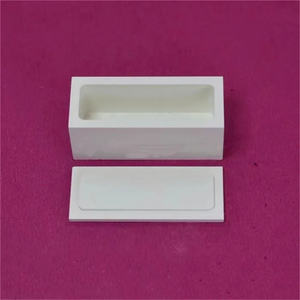
Alumina 95 Porcelain Roller Kiln Ceramic Ring High Temperature Resistant Industrial Ceramic Plates for Industrial Use
